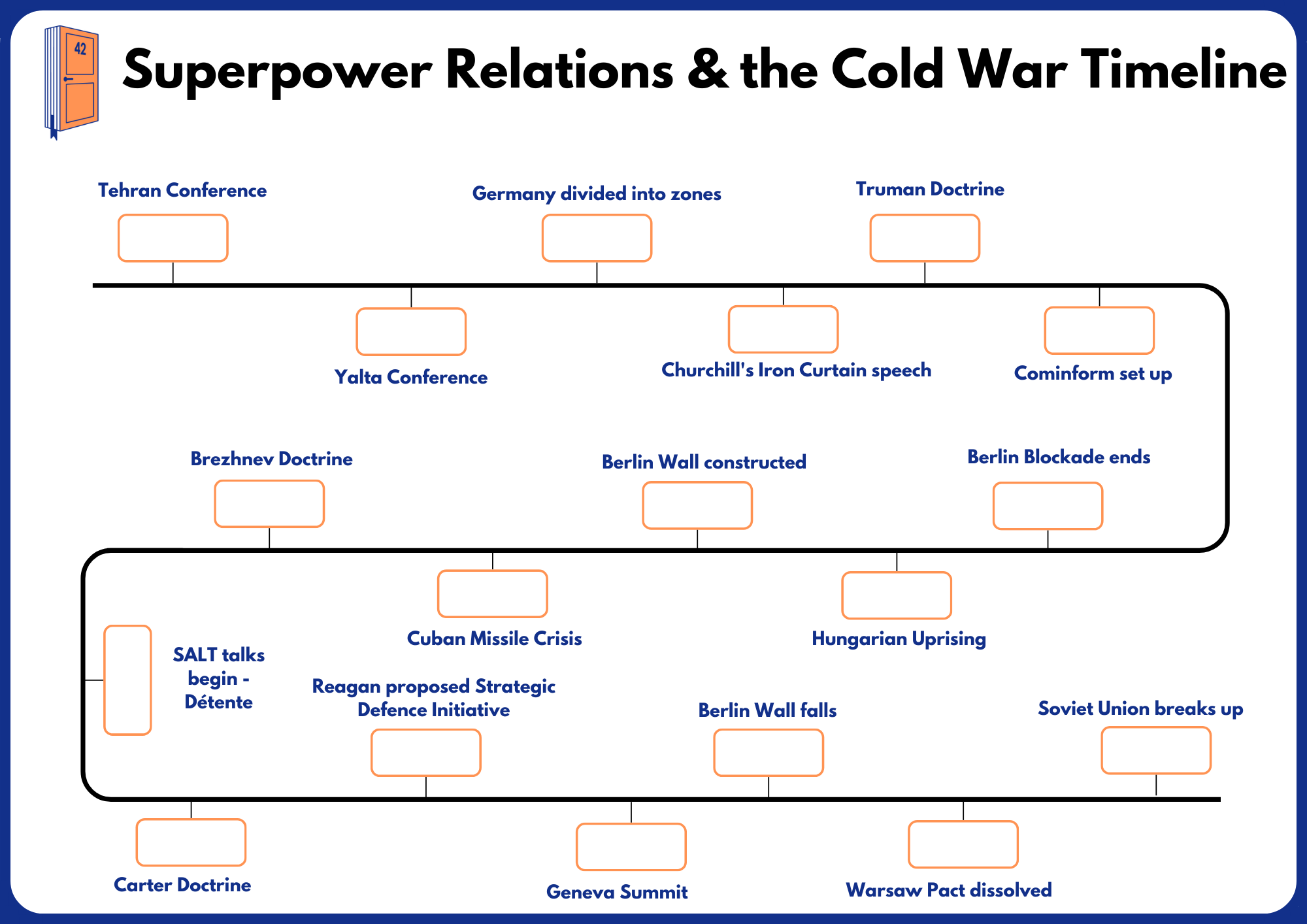U.S.-China Relations: Breakdown And The Looming Cold War

Table of Contents
Economic Rivalry: The Foundation of the Fracture
The foundation of the current fracture in U.S.-China relations is undeniably economic. The escalating trade war, initiated during the Trump administration and continuing under Biden, has had profound global consequences. This economic rivalry goes beyond simple tariffs; it's a multifaceted struggle encompassing:
- Tariff Battles: Years of tit-for-tat tariffs imposed on billions of dollars worth of goods have disrupted global supply chains and increased prices for consumers worldwide.
- Technology Disputes: The competition for dominance in crucial technologies, particularly semiconductors and 5G, has led to restrictions on investment, technology transfers, and the accusations of intellectual property theft.
- Investment Restrictions: Both countries have implemented measures to restrict foreign investment, hindering economic cooperation and fostering a climate of distrust. This includes scrutiny of Chinese investments in sensitive US sectors and restrictions on US companies operating in China.
This economic friction has spurred a significant trend towards "decoupling," where nations attempt to reduce their economic reliance on each other. This decoupling manifests in several ways:
- Reshoring: Companies are moving manufacturing operations back to their home countries to reduce reliance on Chinese production.
- Nearshoring: Businesses are shifting production to countries closer geographically, such as Mexico or Vietnam, to mitigate risks associated with relying on China.
- Rise of Regional Trade Blocs: The push for regional trade agreements, like the CPTPP, reflects a desire to create alternative trading blocs that reduce dependence on a single dominant power.
The effectiveness of economic sanctions remains a point of contention. While sanctions can exert pressure, their impact is often complex and can have unintended consequences for global markets and international relations.
Geopolitical Competition: A Clash of Ideologies and Interests
Beyond economics, the geopolitical competition between the US and China is fueling the tension. The South China Sea dispute, for example, is a significant flashpoint:
- Island Building: China's extensive island-building activities in the South China Sea are seen as a challenge to regional stability and freedom of navigation.
- Military Presence: The increasing militarization of the region, with both countries deploying naval assets, further exacerbates tensions and raises the risk of accidental conflict.
- Freedom of Navigation: The US Navy’s routine freedom of navigation operations in the South China Sea challenge China's claims and highlight the fundamental disagreement over maritime rights.
The status of Taiwan represents perhaps the most significant geopolitical risk.
- Cross-Strait Tensions: China's continued threats to "reunify" Taiwan with mainland China, potentially by force, are a constant source of tension.
- US Arms Sales to Taiwan: The US's continued arms sales to Taiwan signal support for Taiwan's self-governance and further inflame tensions with Beijing.
- China's Military Buildup: China's ongoing military modernization, particularly its naval and air capabilities, increases the potential for military conflict across the Taiwan Strait.
The competition for influence extends globally, encompassing Africa, Latin America, and other regions:
- Belt and Road Initiative: China's Belt and Road Initiative (BRI) aims to expand its economic and political influence across Eurasia and beyond, challenging traditional US spheres of influence.
- US Development Aid and Diplomatic Efforts: The US counters the BRI through its own development aid programs and diplomatic initiatives, aiming to maintain its strategic partnerships and counter China's growing presence.
Technological Warfare: A Race for Supremacy
The competition between the US and China extends into the realm of technological warfare, a silent but potentially decisive battleground:
- AI, 5G, and other Key Technologies: Both countries are investing heavily in research and development (R&D) across several key technologies, including artificial intelligence, 5G, and quantum computing, aiming for technological supremacy. Talent acquisition plays a crucial role in this competition.
- Export Controls: Both the US and China are increasingly employing export controls to restrict the flow of sensitive technologies to each other, hindering innovation and cooperation.
- Cybersecurity Threats and Espionage: Cyberattacks, data breaches, and industrial espionage are rampant, representing a significant element of the technological competition, impacting national security and corporate interests.
The implications of this technological competition are far-reaching, affecting not only national security but also global economic dominance and the balance of power in the 21st century.
The Looming Cold War: Scenarios and Potential Outcomes
The trajectory of U.S.-China relations remains uncertain, with several possible scenarios:
- Continued Escalation: A scenario of continued escalation would involve a further deterioration of relations, increased military posturing, and a greater risk of conflict, potentially involving proxy wars.
- Managed Competition: This scenario entails a degree of cooperation in specific areas while maintaining competition in others. This would involve establishing clear rules of engagement to mitigate the risk of conflict.
- Limited Cooperation: This involves focused cooperation on specific global challenges such as climate change or pandemics, while maintaining a fundamentally adversarial relationship in other spheres.
The potential for proxy conflicts and regional instability is high, particularly in areas where both countries have significant interests or influence. The impact on global governance and international institutions would be substantial, potentially leading to a fracturing of international cooperation and a decline in multilateralism.
Charting a Course Away from a New Cold War: Understanding U.S.-China Relations
The deterioration of U.S.-China relations, fueled by economic rivalry, geopolitical competition, and technological warfare, presents a grave threat to global stability. The potential for a new Cold War, with its devastating consequences, is a real and present danger. Understanding the complexities of U.S.-China relations is paramount.
To avert a new Cold War, pathways for de-escalation and cooperation must be explored. This includes diplomatic dialogue, arms control agreements, and focusing on areas of mutual interest, such as climate change and global health.
Stay informed about the evolving situation in U.S.-China relations. Engage in constructive dialogue and advocate for policies that promote cooperation and prevent further escalation. The future of global stability depends on understanding and navigating the complexities of U.S.-China relations effectively.

Featured Posts
-
 Russias Aerial Assault On Ukraine Us Peace Plan Faces Steep Odds
Apr 22, 2025
Russias Aerial Assault On Ukraine Us Peace Plan Faces Steep Odds
Apr 22, 2025 -
 Ftc Appeals Microsoft Activision Ruling Whats Next
Apr 22, 2025
Ftc Appeals Microsoft Activision Ruling Whats Next
Apr 22, 2025 -
 Open Ais Chat Gpt Faces Ftc Probe
Apr 22, 2025
Open Ais Chat Gpt Faces Ftc Probe
Apr 22, 2025 -
 Razer Blade 16 2025 Ultra Portable Powerhouse A Comprehensive Review
Apr 22, 2025
Razer Blade 16 2025 Ultra Portable Powerhouse A Comprehensive Review
Apr 22, 2025 -
 Russias Renewed Offensive In Ukraine Following Easter Ceasefire
Apr 22, 2025
Russias Renewed Offensive In Ukraine Following Easter Ceasefire
Apr 22, 2025
